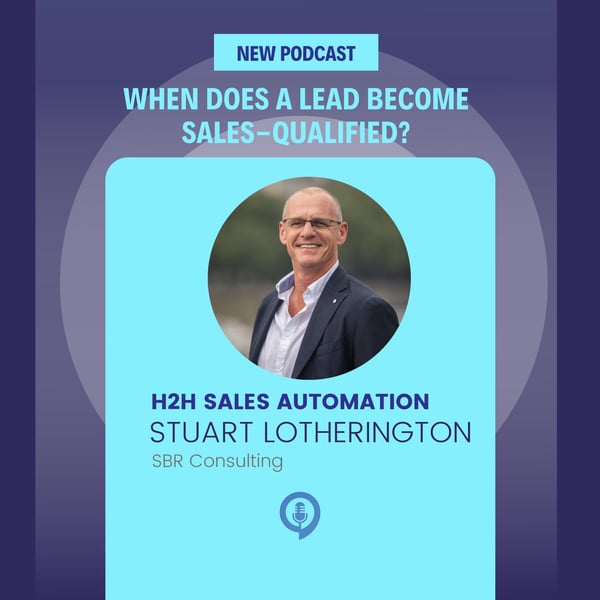Bart Kowalczyk of Automatenow asked Stuart Lotherington, Managing Director of SBR Consulting in London, for his perspective.
Avoiding a bad sales experience
Stuart started the hard way in sales, right in at the deep end. He was going door to door, cold-calling and talking to people on their doorsteps. But he says he was lucky: “I was given great training. I was taught how to make the sales experience enjoyable for both parties.”
Sadly, nowadays, there’s a lot of bad practice in B2B & B2C sales. A good practice is a customer-centric, consultative approach. It’s H2H – human to human. It’s not about chasing the sale but seeking to help someone. So, we should avoid selling stuff customers do not need or want.
Building relationships
We want to develop a relationship with the prospect before pitching to them.
The starting point comes when we build our Ideal Client Profile. Compare social media – the ads that pop up in your timeline are (theoretically) modelled to appeal specifically to you, based on the profile they have of you. So, you should never see ads for stuff you don’t want.
This leads us to MQLs and SQLs

Marketing-Qualified Leads (MQLs) & Sales-Qualified Leads (SQLs)
MQL is a prospect who has engaged with some of your marketing activity. Eg signed up for your webinar and download a publication of yours. It’s one step up from a cold lead.
An SQL is a prospect at the next stage: an MQL with a potential need for your goods or services.
Don’t jump the gun
This is important. You could lose sales by pitching to the wrong person or too early.
An efficient medium or large sales team will be divided into Sales Development Representatives (SDRs) and Account Executives (AEs). Part of the SDRs’ role is to progress the MQL to become an SQL or identify the SQLs and pass them onto the AEs. The AEs can have a deeper knowledge of the company’s product or service range and can engage with the SQL on a detailed level, answering any questions they might have.
We advise our clients on how to create a “Buying Atmosphere”. You do this by asking the prospect questions about their engagement with you. Eg, “You’ve engaged with our marketing; how could we make our offer perfect for you?”
Identifying an SQL
Part of the process is establishing whether or not the prospect is a decision-maker. You might have someone from an ideal target organisation, but if they can’t sign off a purchase of what you’re offering, they’re not an SQL.
LinkedIn is a great tool for researching this kind of information. You can see what role the prospect plays in the company. Sometimes, a simple conversation might reveal whether the prospect might be a sole trader or part of a small organisation that is not in a position to buy your goods or services.
Intuition vs playbook/script for the pitch
A scripted pitch can feel mechanical, but casual conversation risks omitting crucial information.
AT SBR, staff use prompts, rather than a strict script, when pitching to a prospect. But, once a salesperson gains experience using the prompts and following the system, they gradually become more relaxed, more intuitive and more responsive to what the prospect is saying. The experience becomes more like a spontaneous conversation.
F2F vs Online to qualify sales leads
You can never beat the experience of F2F when talking to a prospect. You pick up on all the body language cues, it feels more natural, and you bond more – the whole thing is much more H2H.
However, the downside can be just how much time is involved. A 20-minute chat on Zoom can replace several hours of travel, parking and waiting around at Reception for a F2F.
And, with multiple people in a Zoom meeting, you can look at everyone at the same time on screen, you can see everybody’s name, and nobody can see you reading prompts on your screen!
Step by Step Qualification Process
Many sales organisations use the BANT framework. But there is an improved version that doesn’t put Budget as the starting point.
SBR use their NTABO process:
Need – clarify what the client’s need is
Timelines – when is the right time to start?
Authority – who is the decision maker?
Budget – now is the time to ask this question
Obstacles – what, if anything, needs to be resolved before we start?





